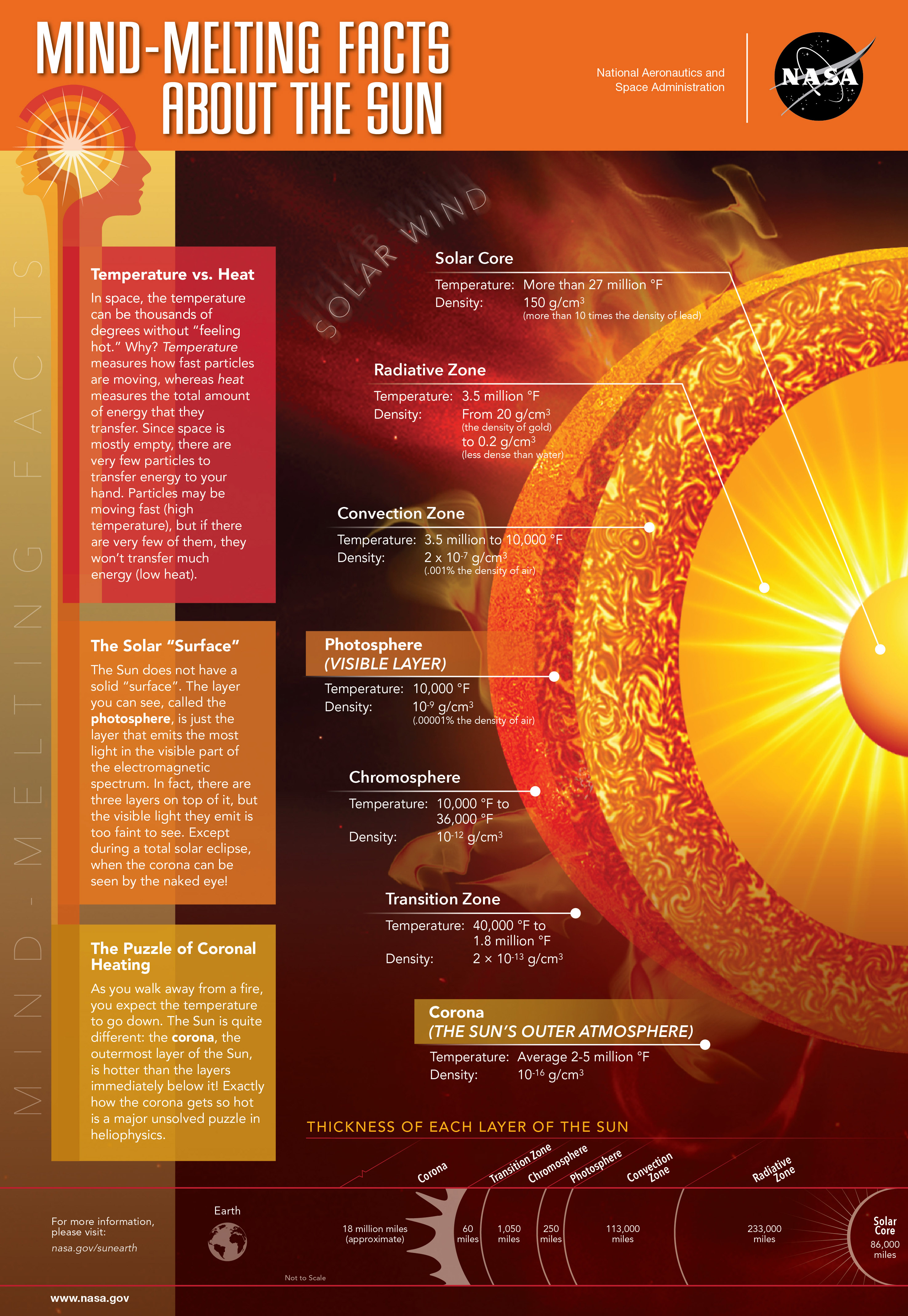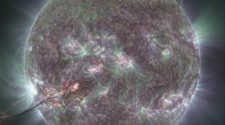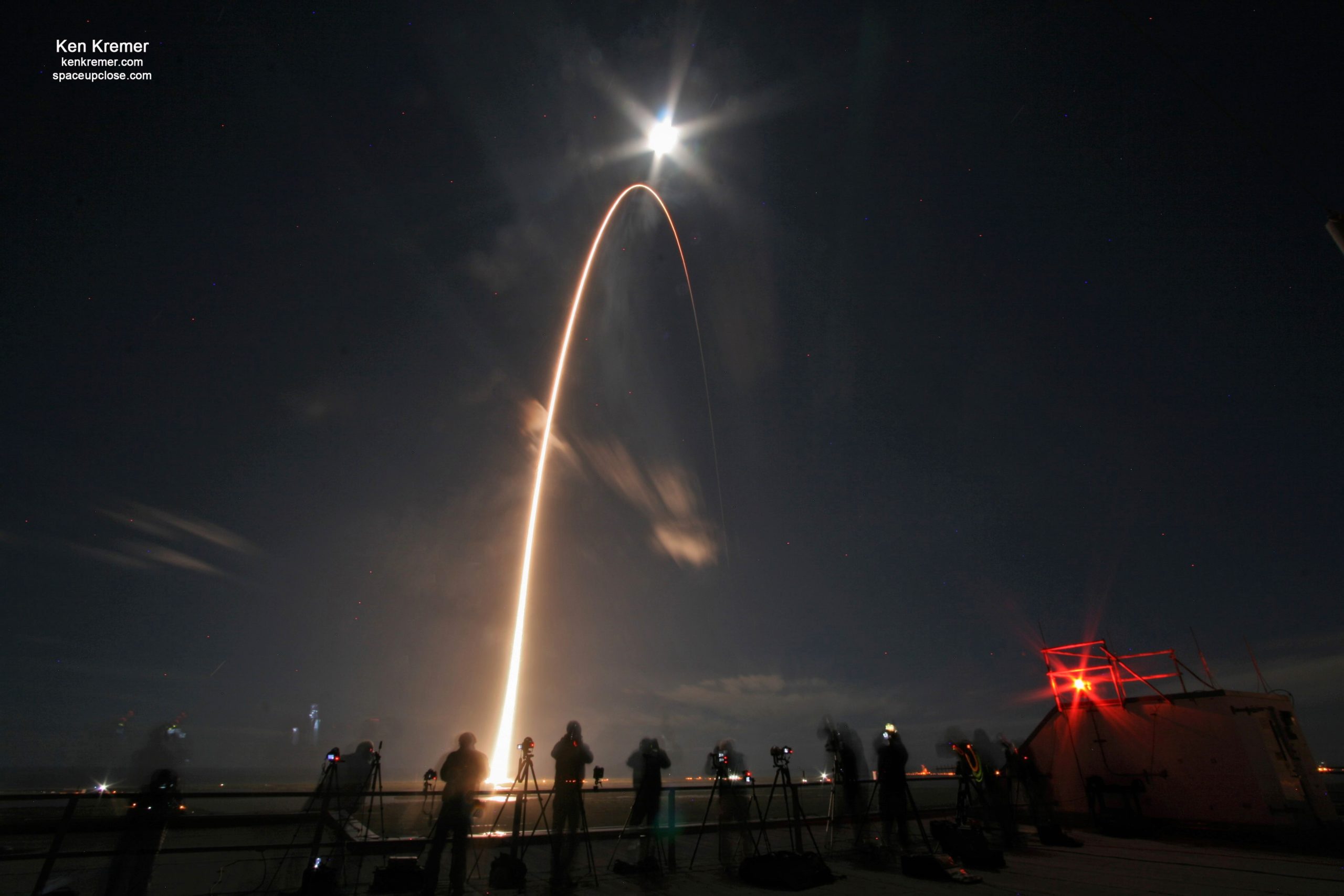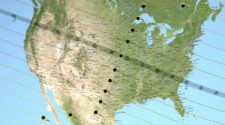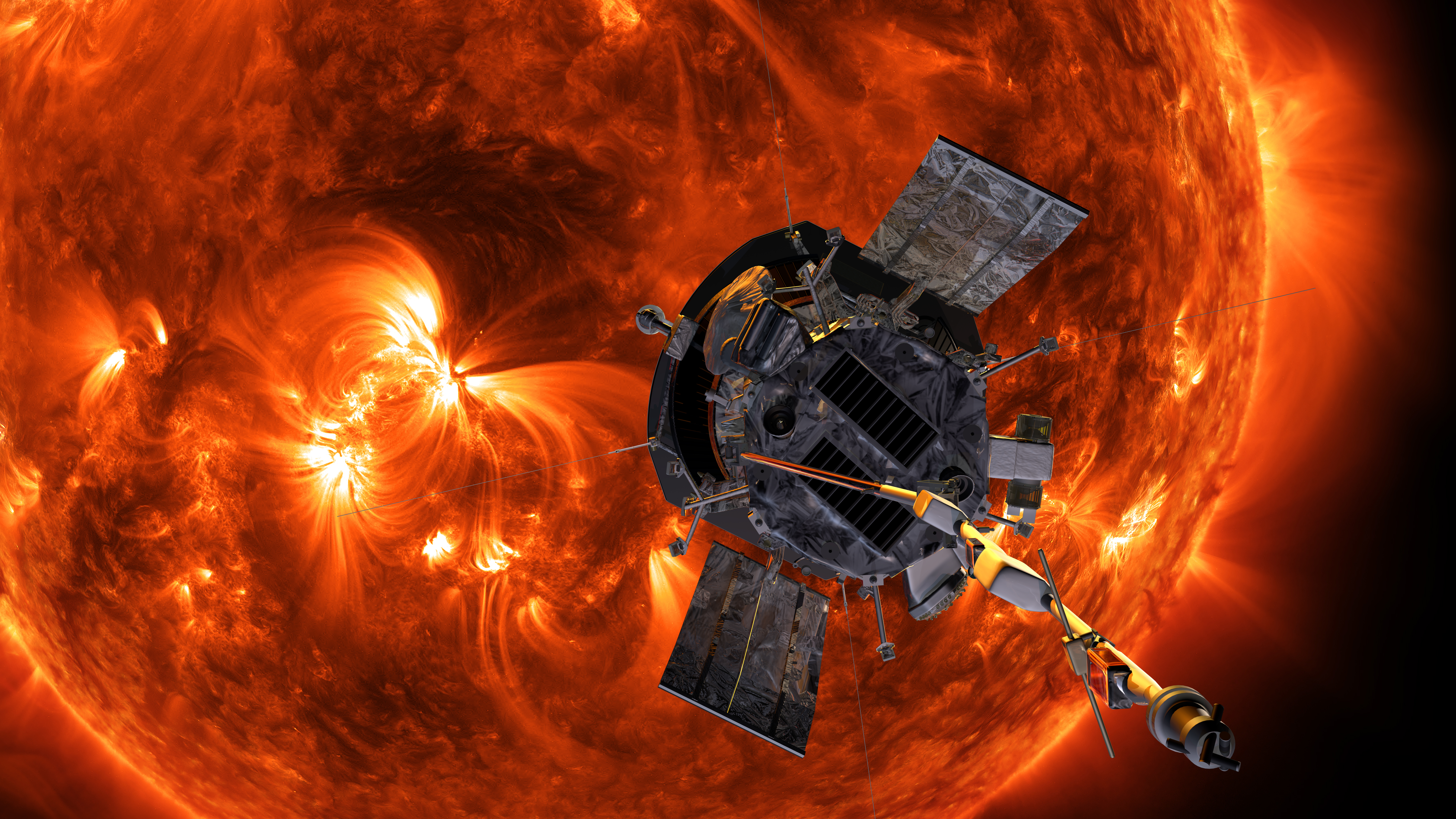
NASA’s Parker Solar Probe narrowly zipped by the Sun on Sept. 1, 2019 in its third close approach, mere weeks after celebrating the completion of its second solar orbit and the first anniversary of its launch from Earth. Meanwhile, during that same timeframe, the Earth has made only a single leisurely jaunt around the Sun.
Because of the spacecraft’s successful first year in space, the mission team decided to extend science observations as the spacecraft approached its third solar encounter. The probe turned back on its four instrument suites on Aug. 16 to extend the observation period to about 35 days, nearly three times longer than the first two close passes by the Sun.
The extended observation time will let scientists capture the evolution of the solar wind over greater distances as it travels away from the Sun. They also hope the additional data will yield more insight into the energetic particles surrounding the Sun, the corona and the overall solar environment.
The Parker Solar Probe is named for Eugene Parker, the physicist who first theorized the existence of the solar wind – the constant outflow of particles and magnetic fields from the Sun – in 1958. Parker Solar Probe is the first NASA mission to be named for a living person.
In the year since launch, Parker Solar Probe has collected a host of scientific data from two close passes by the Sun.
“We’re very happy,” said Nicky Fox, director of NASA’s Heliophysics Division at NASA Headquarters in Washington, D.C. “We’ve managed to bring down at least twice as much data as we originally suspected we’d get from those first two perihelion passes.”
The spacecraft carries four suites of scientific instruments to gather data on the particles, solar wind plasma, electric and magnetic fields, solar radio emission, and structures in the Sun’s hot outer atmosphere, the corona. This information will help scientists unravel the physics driving the extreme temperatures in the corona – which is counterintuitively hotter than the solar surface below – and the mechanisms that drive particles and plasma out into the solar system.
Parker Solar Probe’s WISPR instrument captures images of solar wind structures as they stream out from the Sun, allowing scientists to connect them with Parker’s in situ measurements from its other instruments.
The video embedded above, which spans Nov. 6-10, 2018, combines views from both WISPR telescopes during Parker Solar Probe’s first solar encounter. The Sun is out of frame past the combined image’s left side, so the solar wind flows from left to right past the view of the telescopes. The bright structure near the center of the left edge is what’s known as a streamer – a relatively dense, slow flow of solar wind coming from the Sun – originating from near the Sun’s equator.
The video appears to speed up and slow down throughout the movie because of the ways data is stored at different points in Parker Solar Probe’s orbit. Near perihelion, the closest approach to the Sun, the spacecraft stores more images – and more frames for a given section make the video appear to slow down. These images have been calibrated and processed to remove background noise.
The Milky Way’s galactic center is visible on the right side of the video. The planet visible on the left is Mercury. The thin white streaks in the image are particles of dust passing in front of WISPR’s cameras.
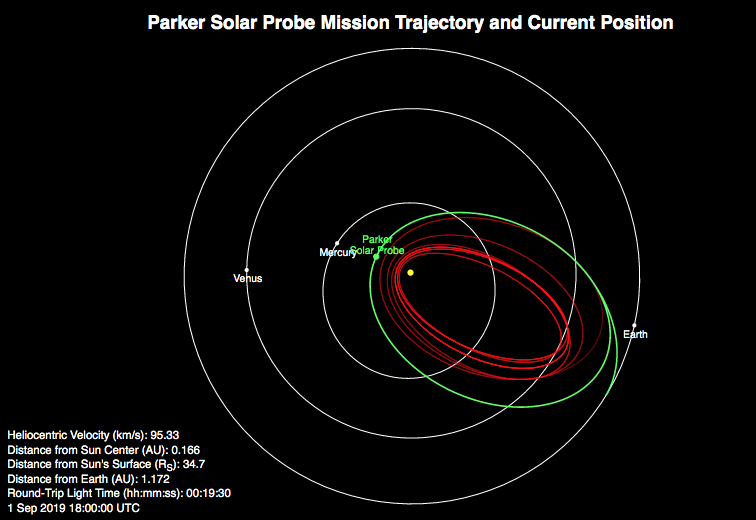
The mission team is currently in the process of analyzing data from Parker Solar Probe’s first two orbits, which will be released to the public later this year.
“The data we’re seeing from Parker Solar Probe’s instruments is showing us details about solar structures and processes that we have never seen before,” said Nour Raouafi, Parker Solar Probe project scientist at the Johns Hopkins Applied Physics Laboratory, which built and operates the mission for NASA. “Flying close to the Sun – a very dangerous environment – is the only way to obtain this data, and the spacecraft is performing with flying colors.”
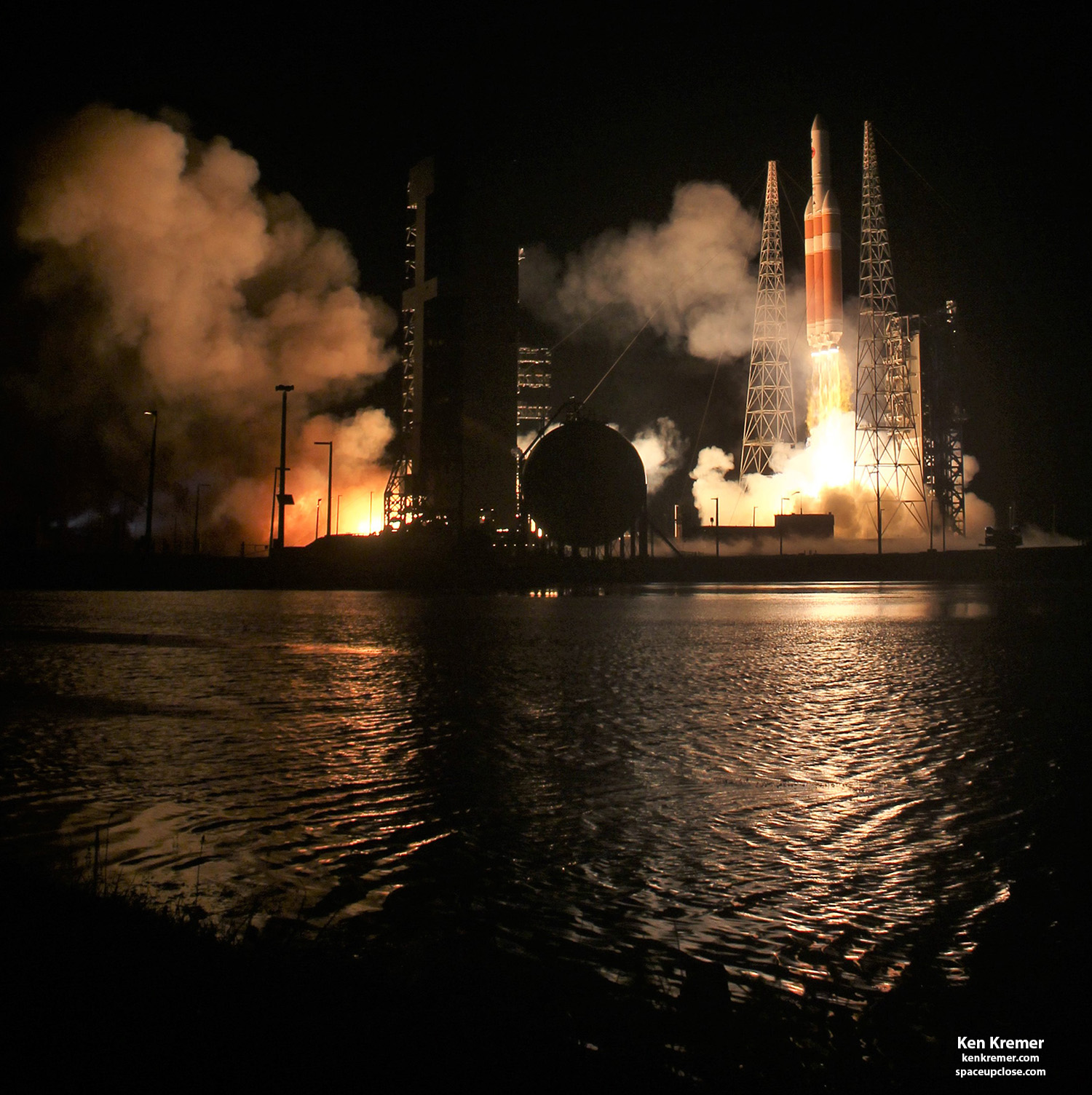
The $1.5 Billion mission began with a dazzling middle-of-the-night blastoff of the mighty Delta IV Heavy rocket in the wee hours of the morning, Aug. 12, 2018 – and delivered the car-sized spacecraft to its intended trajectory towards Venus and the Sun.
The 23-story tall triple-barreled United Launch Alliance Delta IV Heavy rocket put on a brilliant display of fire power with 2.1 million pounds of thrust spewing forth from the trio of liquid oxygen/liquid hydrogen RS-68A main engines that quickly turned night into day a few hours before sunrise under nearly cloud-free skies.
The mission will conduct seven Venus flybys to set up 24 perihelion close encounters with the Sun through 2024. The Venus flybys will precisely set its trajectory toward the Sun and slow the probe down instead of speeding it up.
You can learn more about the Parker Solar Probe at http://parkersolarprobe.jhuapl.edu/index.php.
